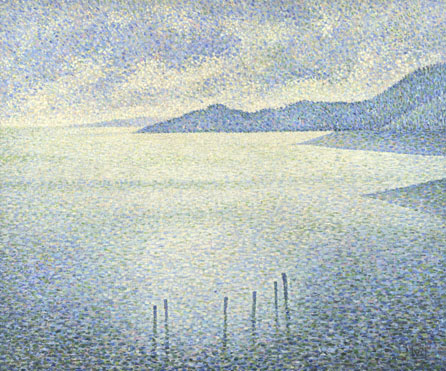In July, The Telegraph published this article about a special installation at The National Gallery in London. Titled “Soundscapes,” the project has invited six composers to choose paintings from the collection and provide a musical accompaniment or response.
There is a diverse range of composers, from New-York-based composer Nico Muhly to wildlife recorder Chris Watson. Jamie xx, from The xx, gave Van Rysselberghe’s “Costal Scene” an electronic production. Unfortunately, there doesn’t appear to be a way to hear the music online, so visiting the Gallery is the only way to hear how these artists interpreted the paintings.
This all reminds me of “the music in their strings,” a similar undertaking that I took last year. With that piece, I used several paintings of Egon Schiele as departure points and attempted to reimagined Schiele’s perspectives almost a century later. I haven’t performed the piece live with the paintings present, but I hope to soon– combining visuals and music can transform the experience, even as it diminishes the subjectivity of the separate pieces.
Unfortunately for the project, the review that appeared in The Telegraph blasted the music for being ‘painfully unambitious’ and ‘an engaging novelty.’ While I haven’t heard the music, it seems like the reviewer had expected a dramatic artistic feat. But why does it need to be profound or challenging? Pairing new music with art can cause the listener to see the painting in a successfully different way, even if it doesn’t claim (or attempt) to subvert or reimagine the original experience.
The article from The Telegraph has the headline “What do paintings sound like?”– but what if it read “What can paintings sound like?”


